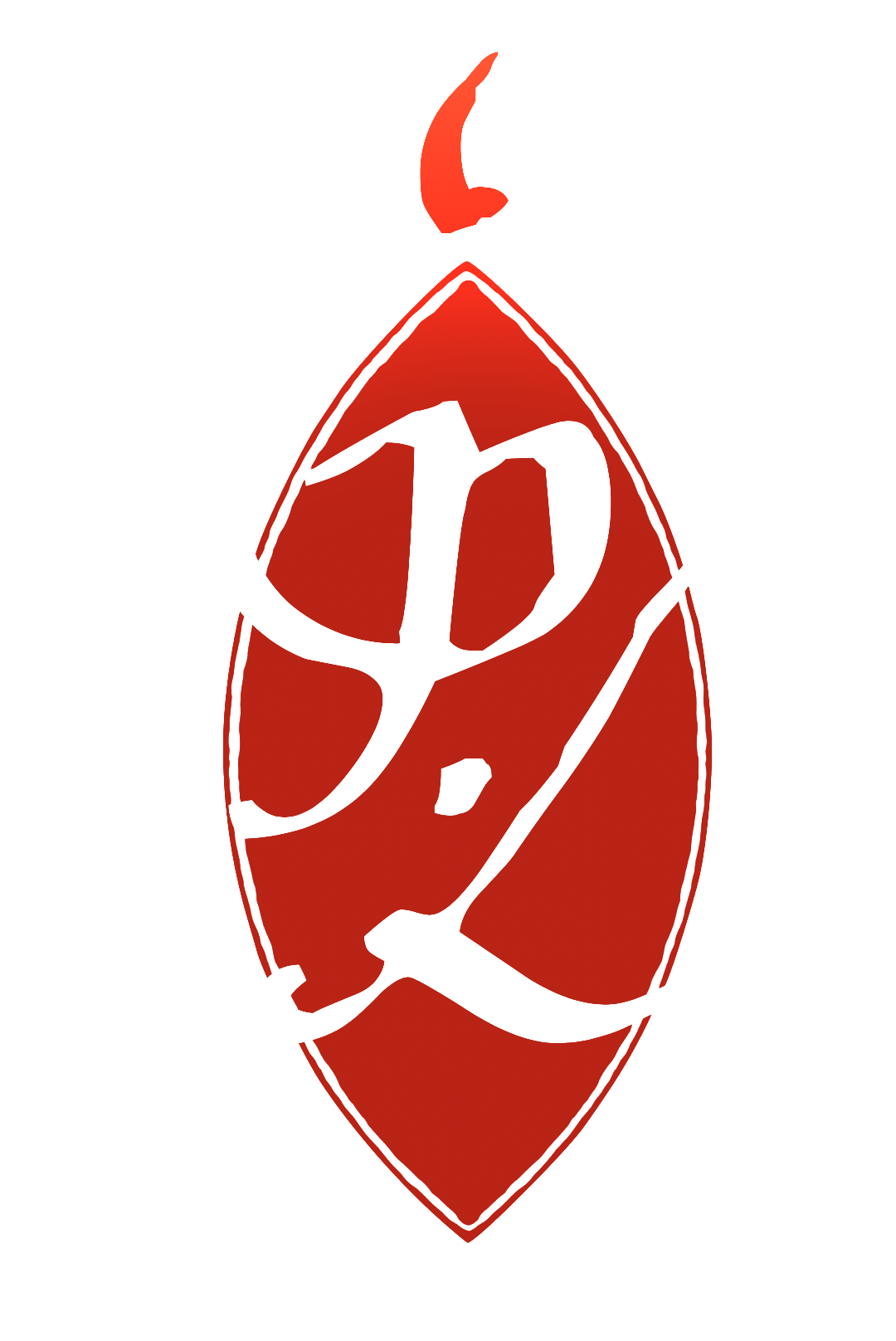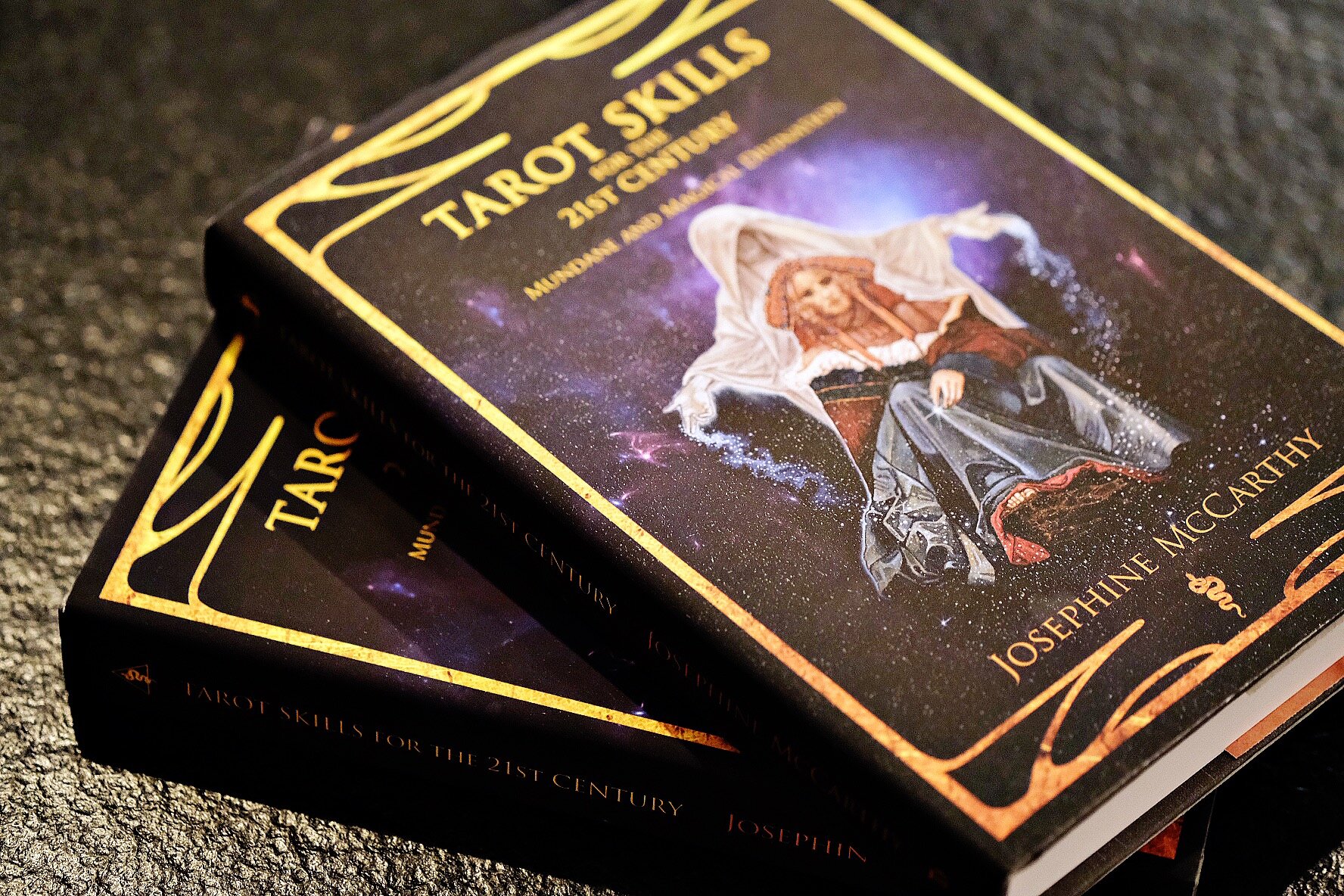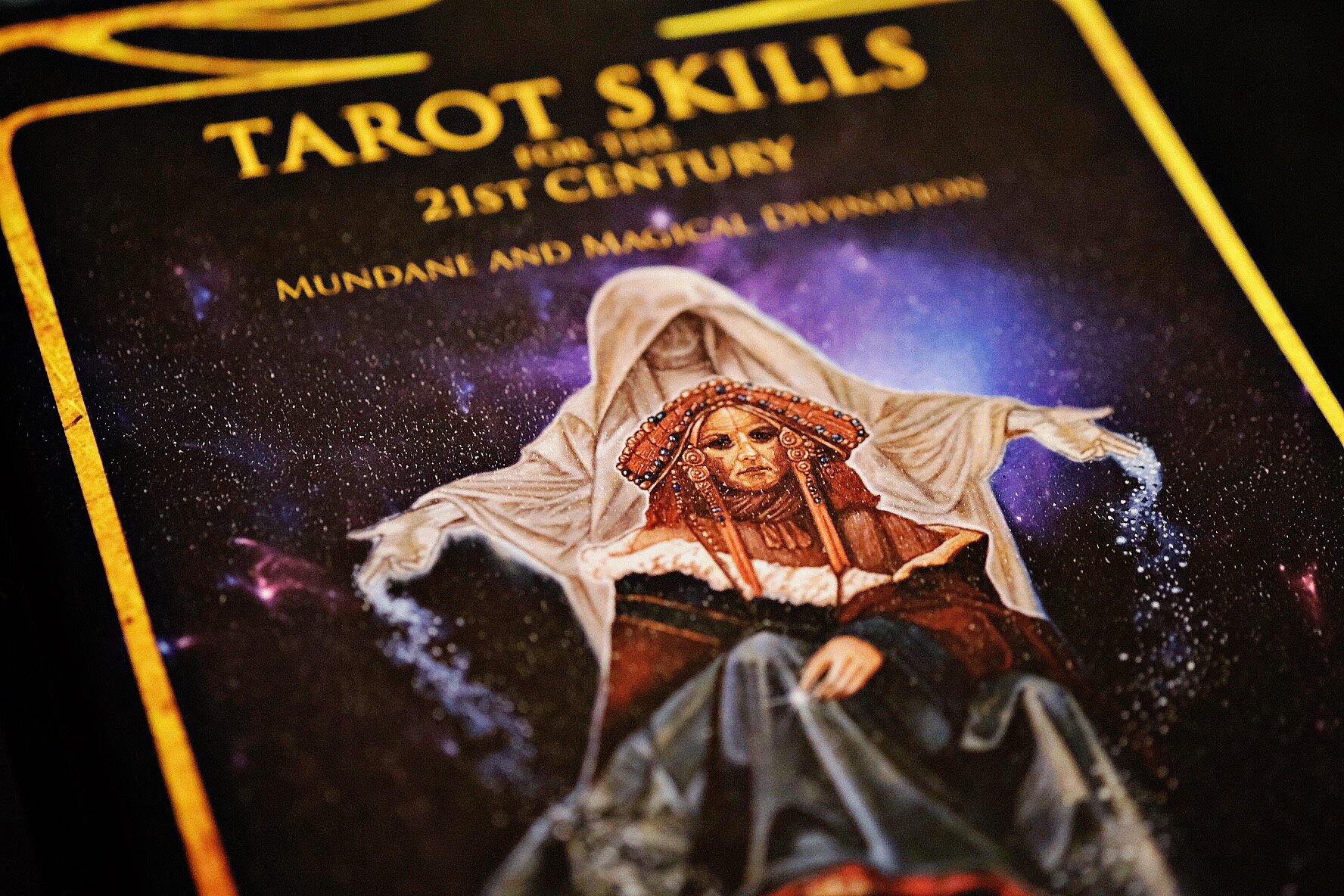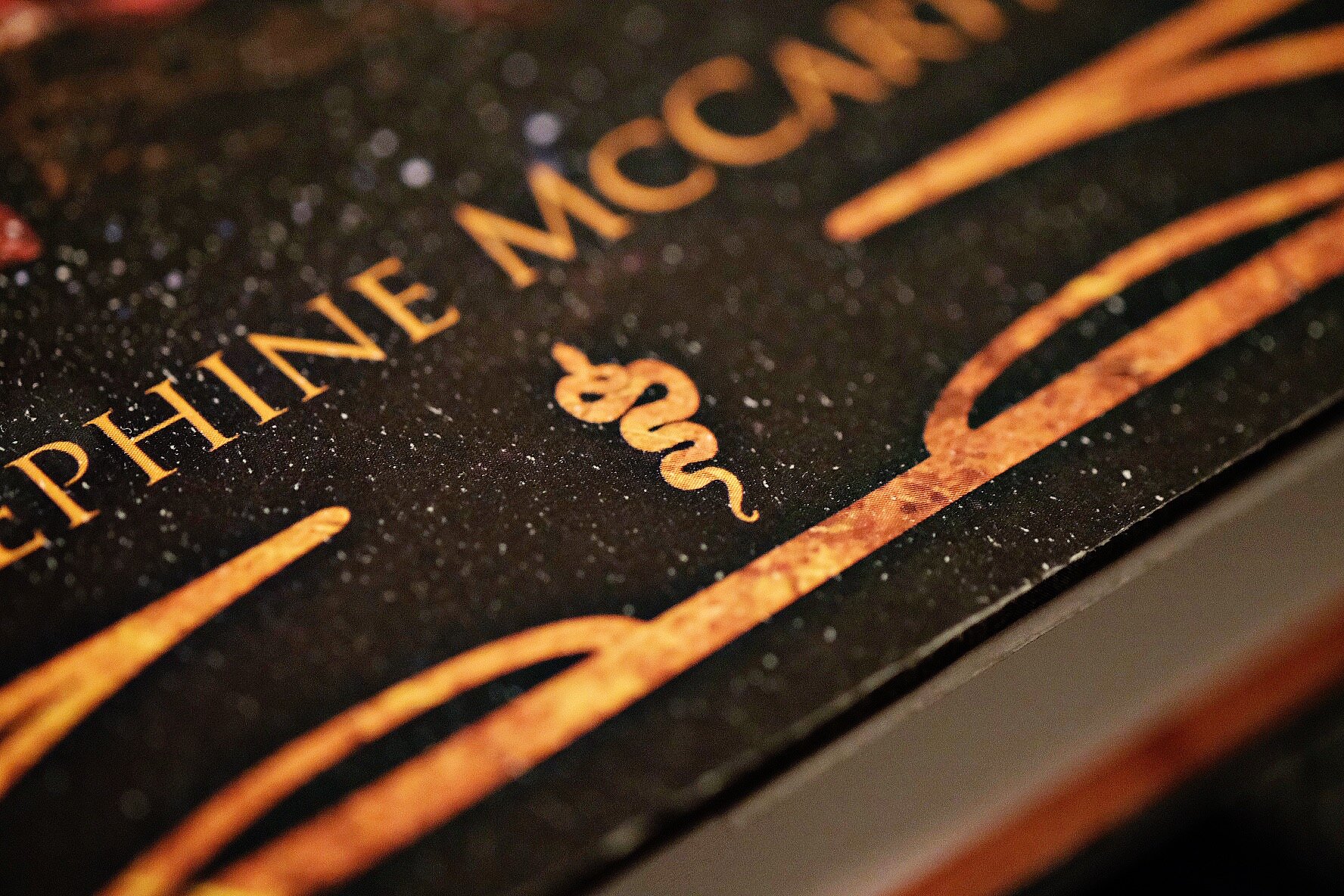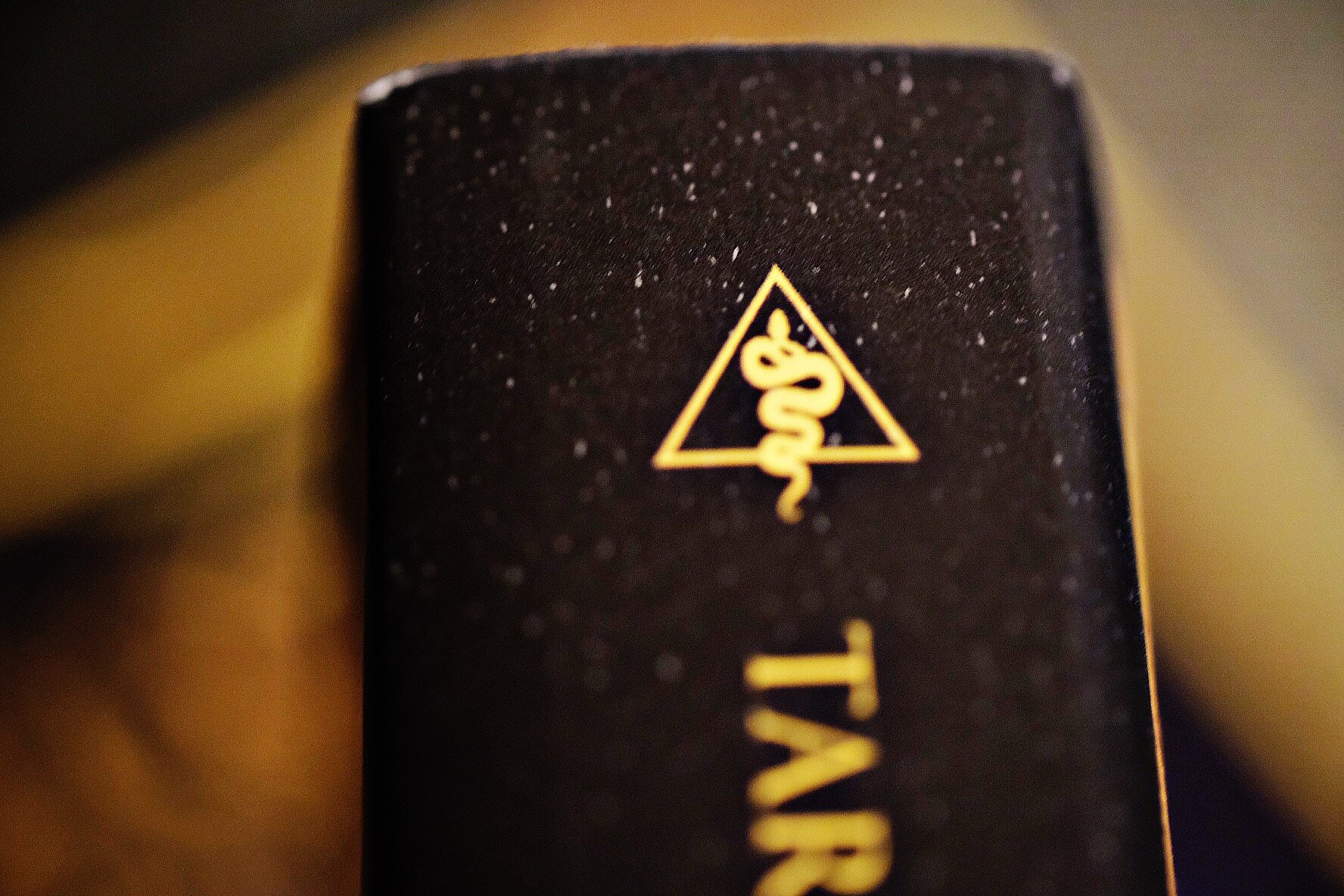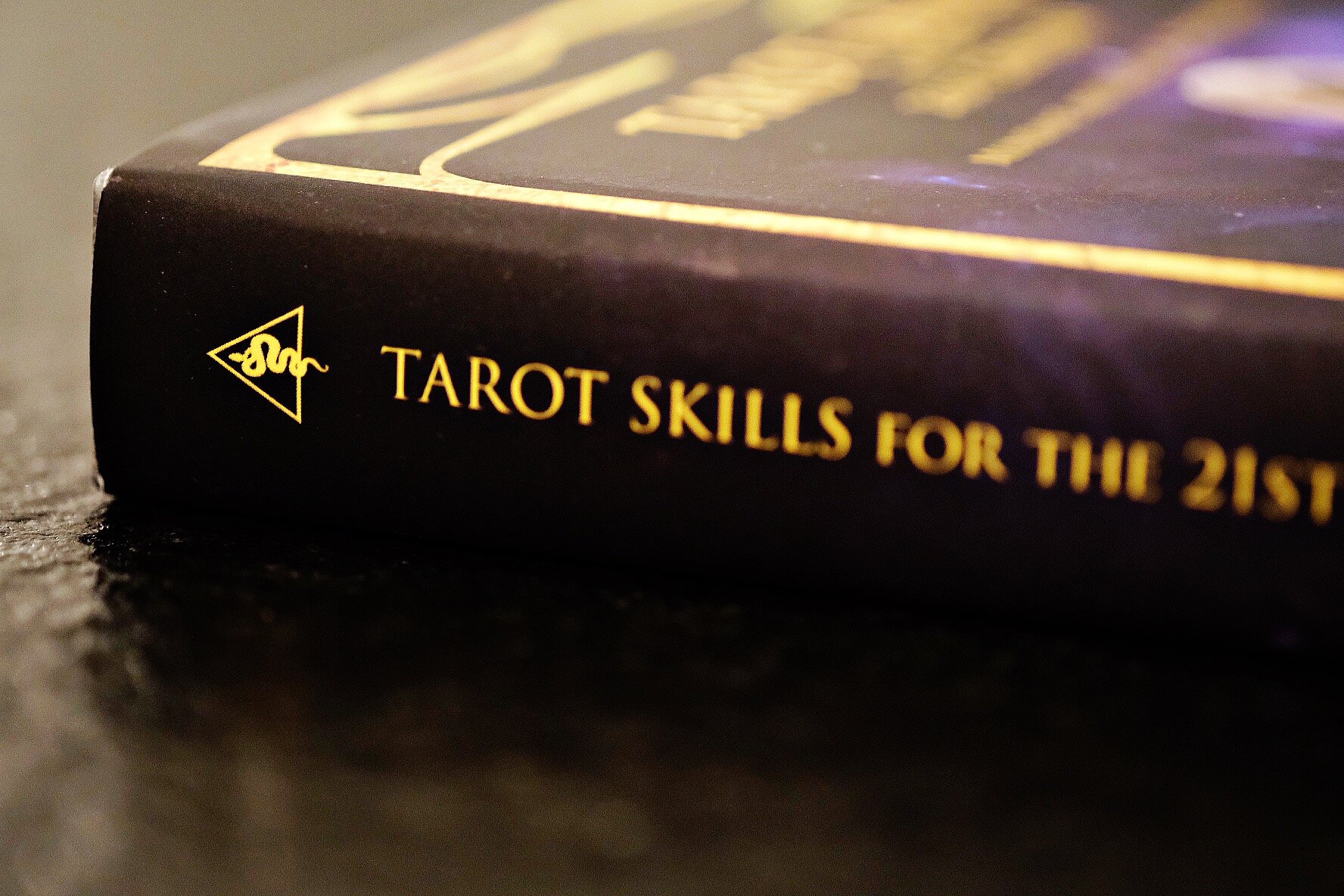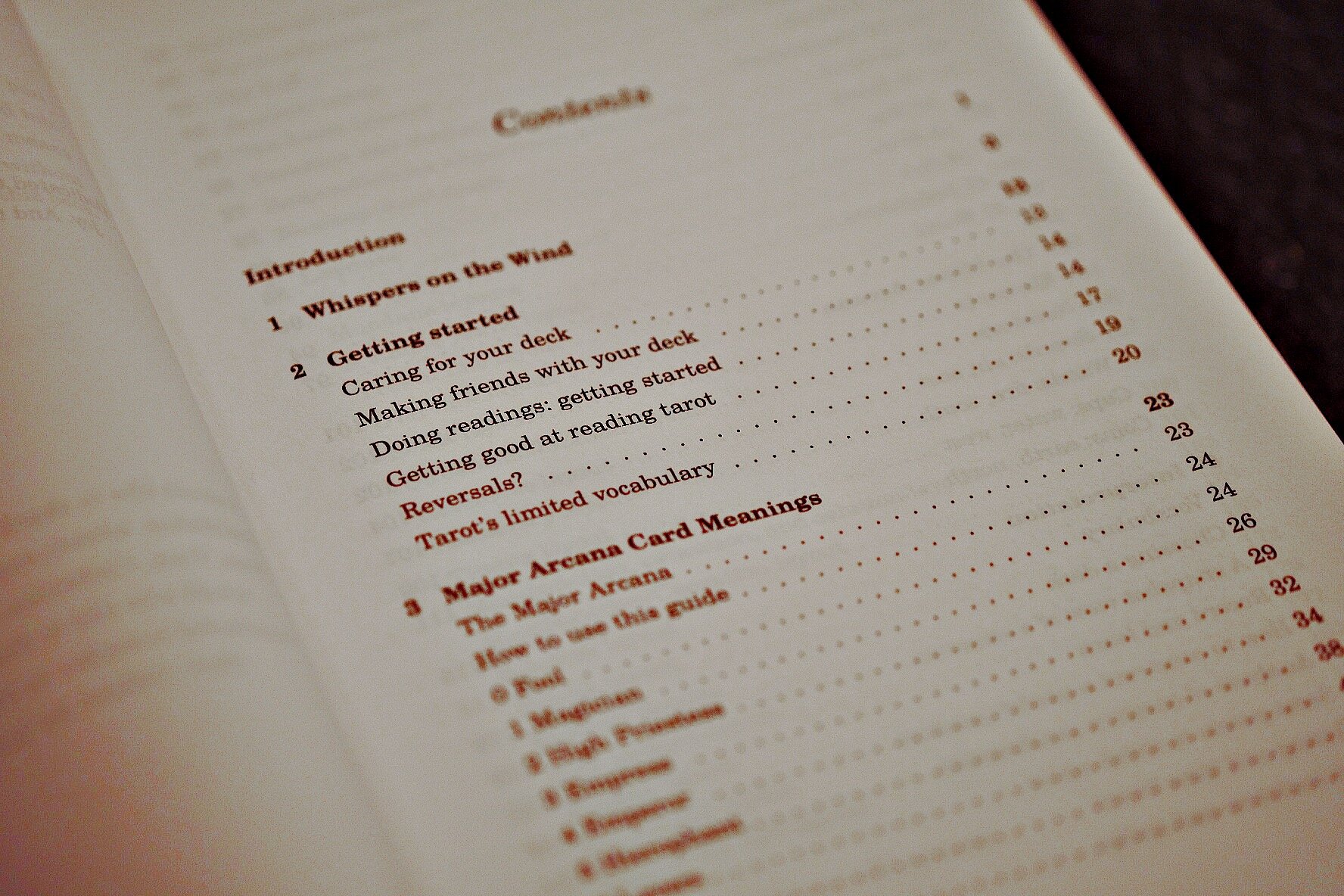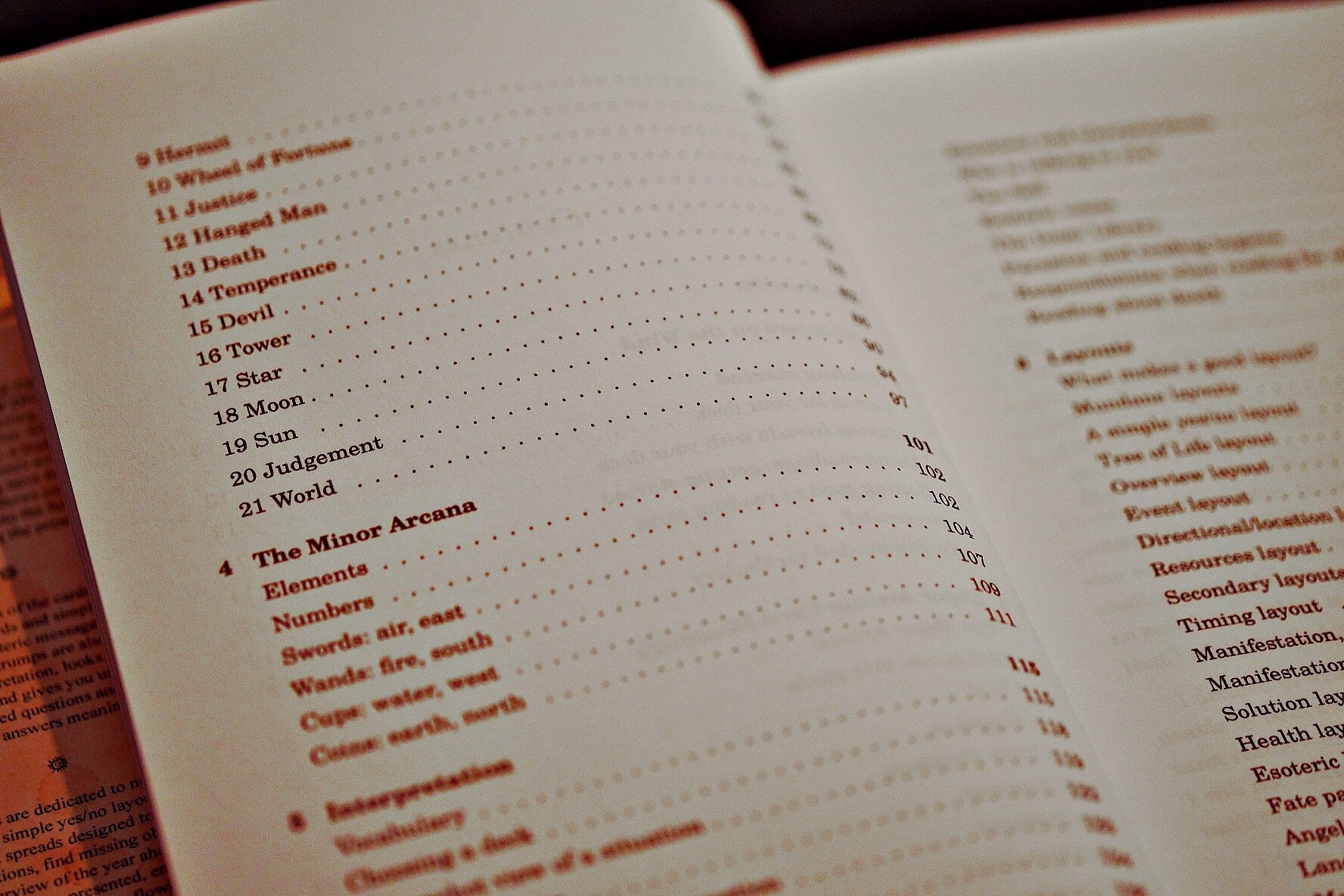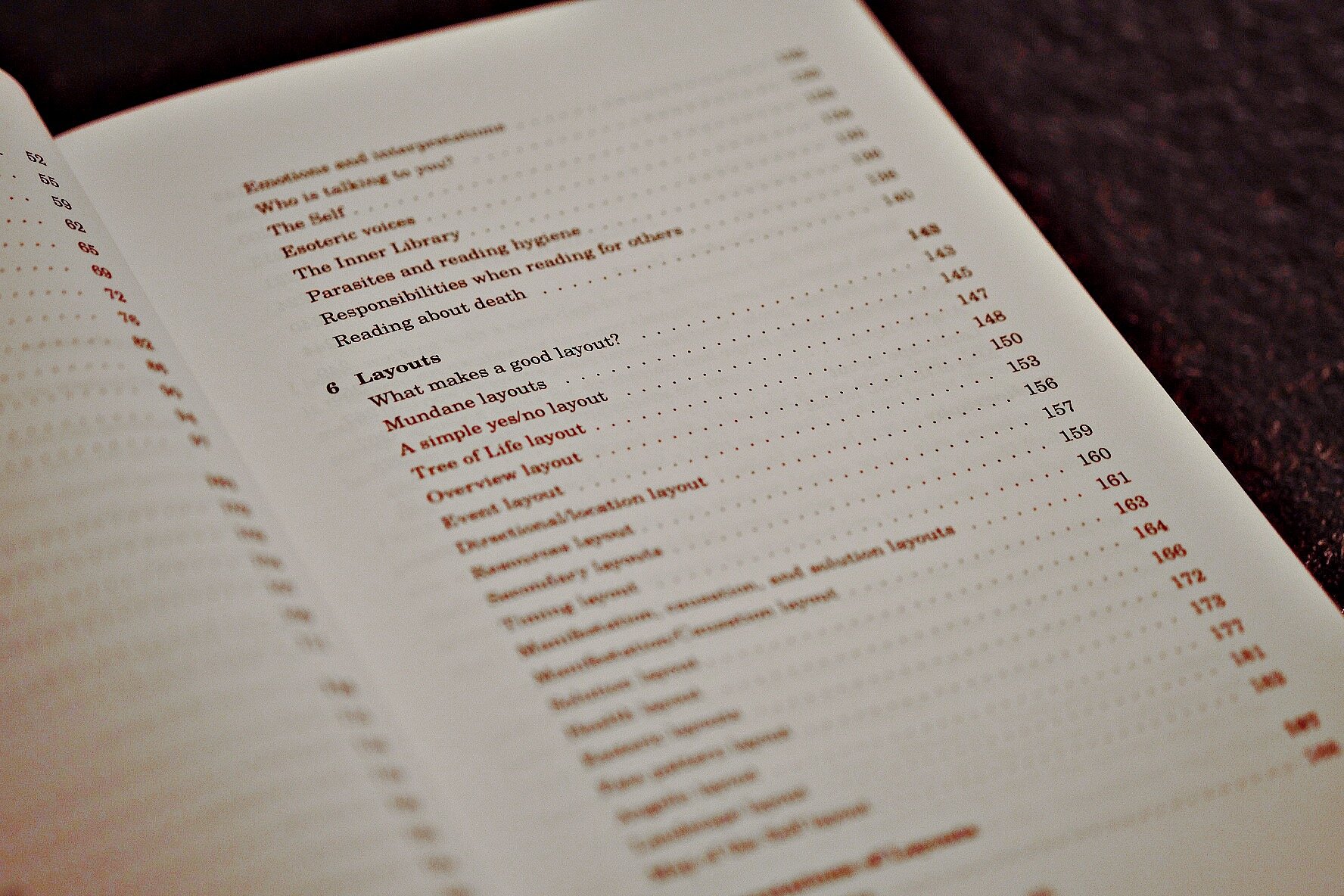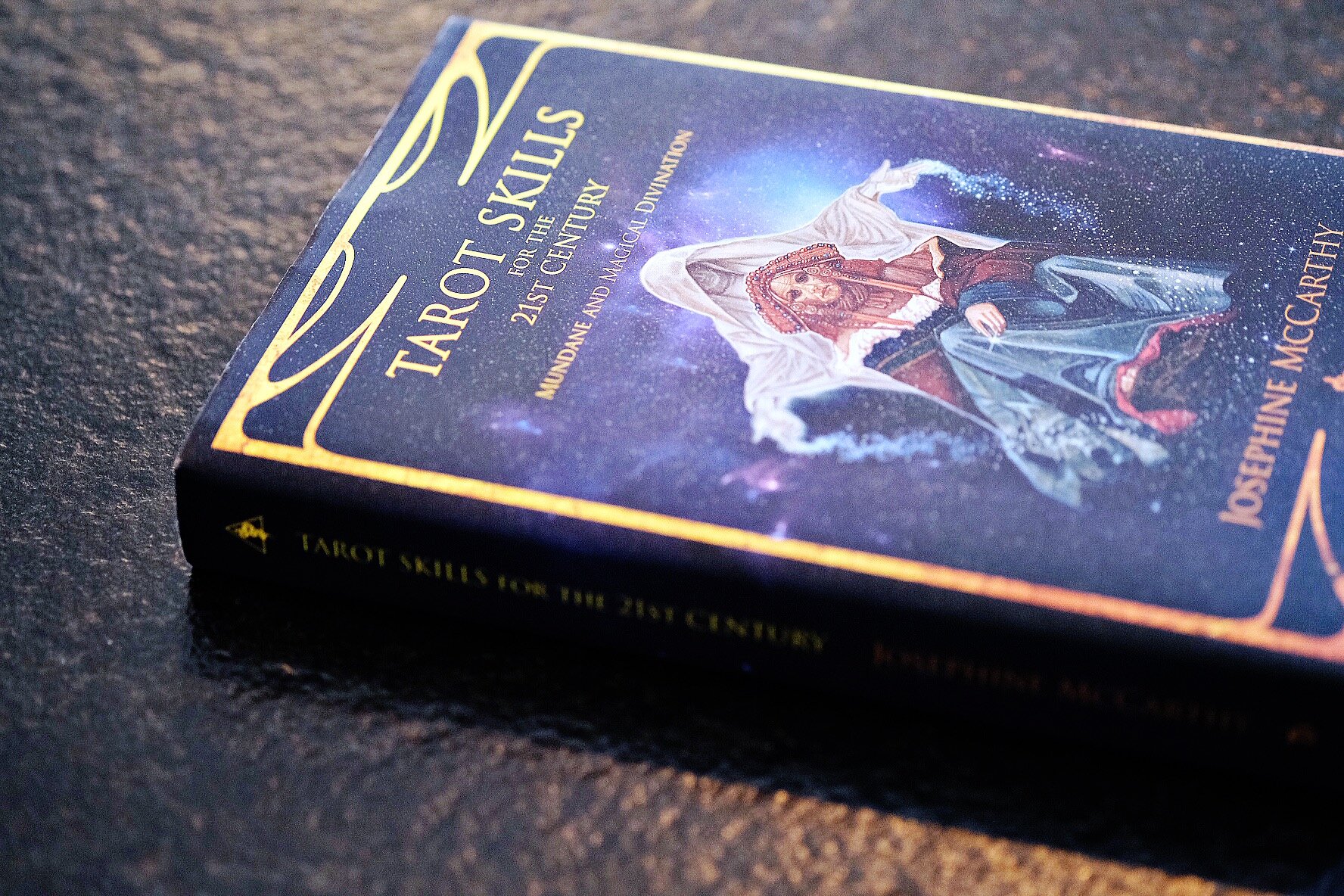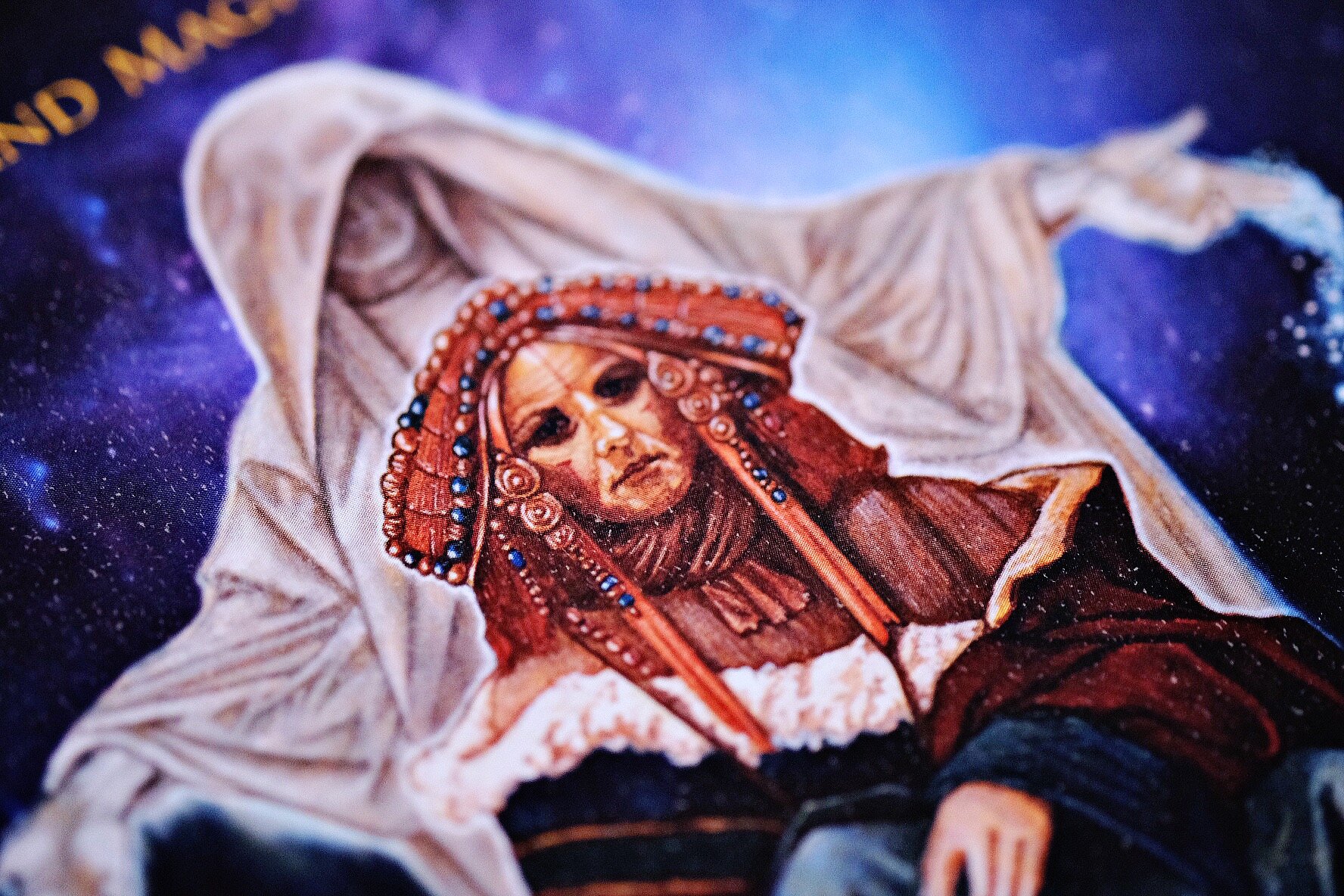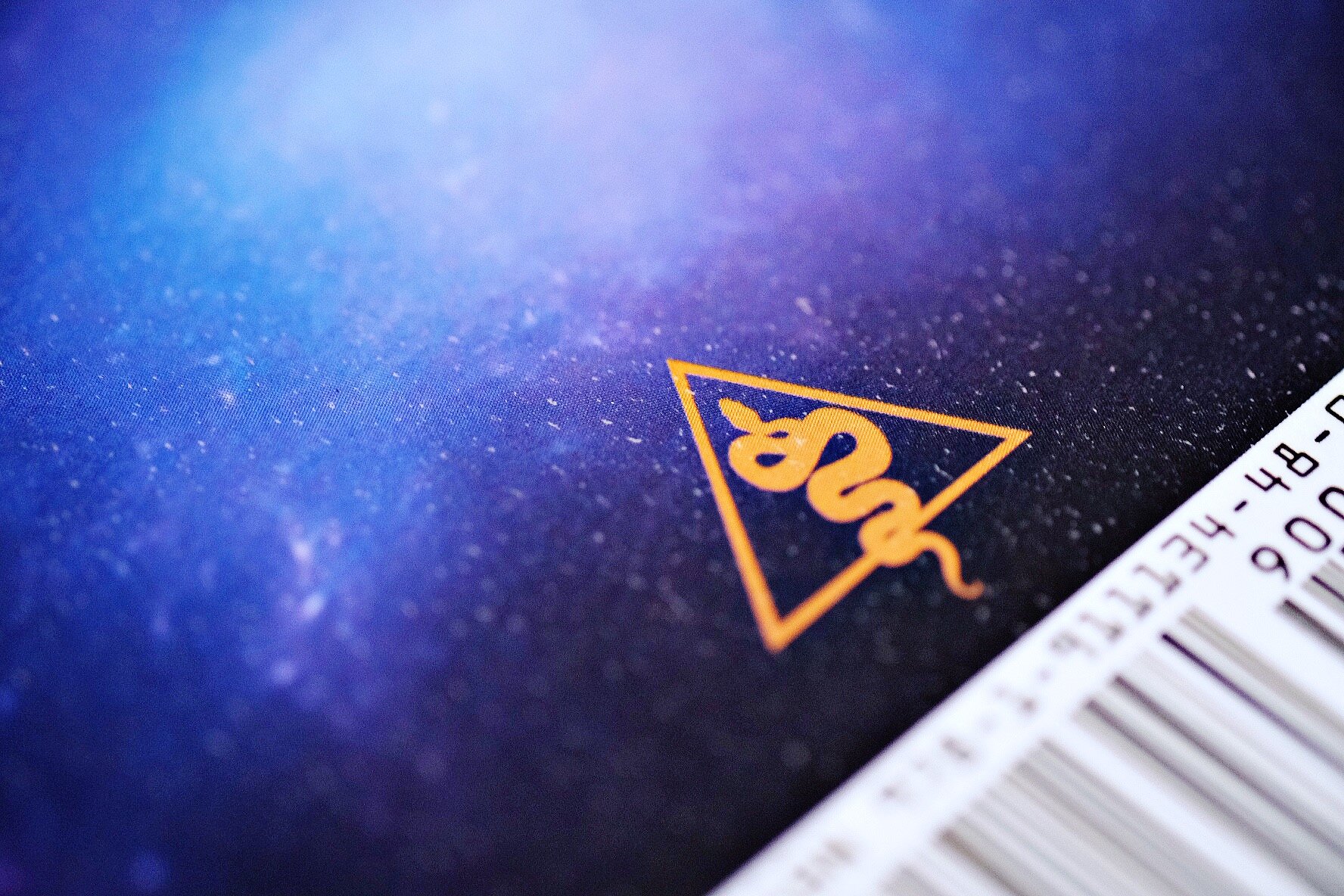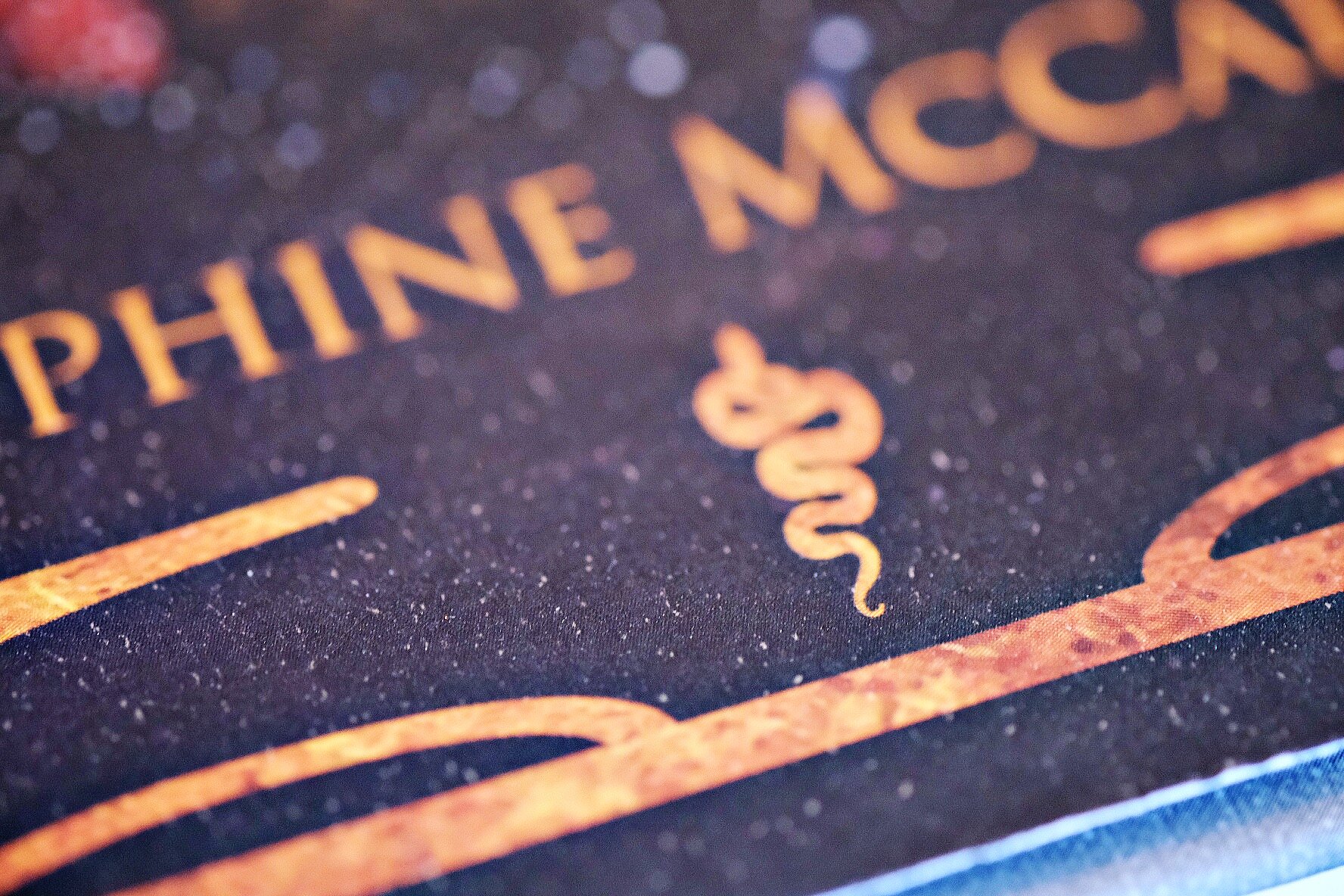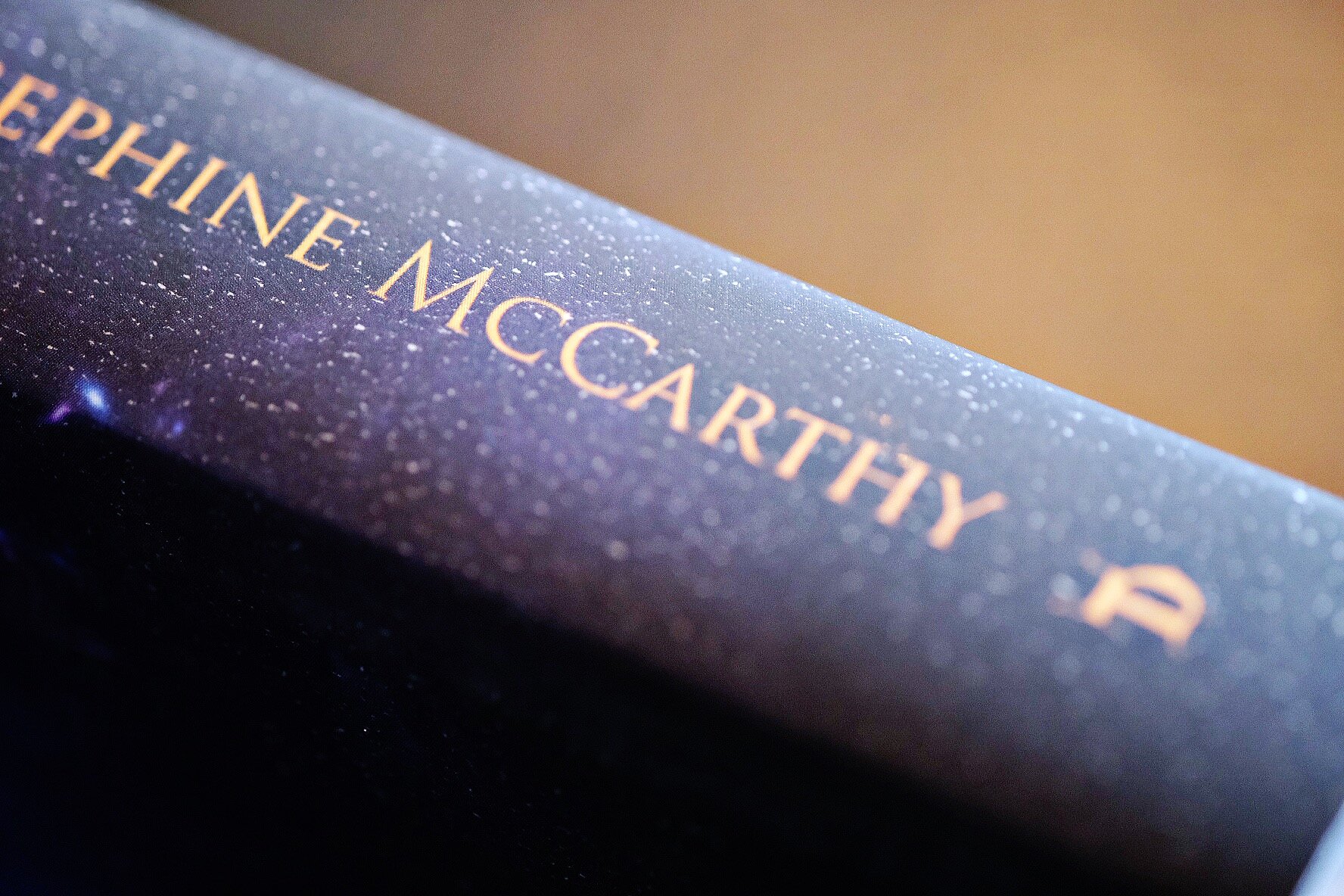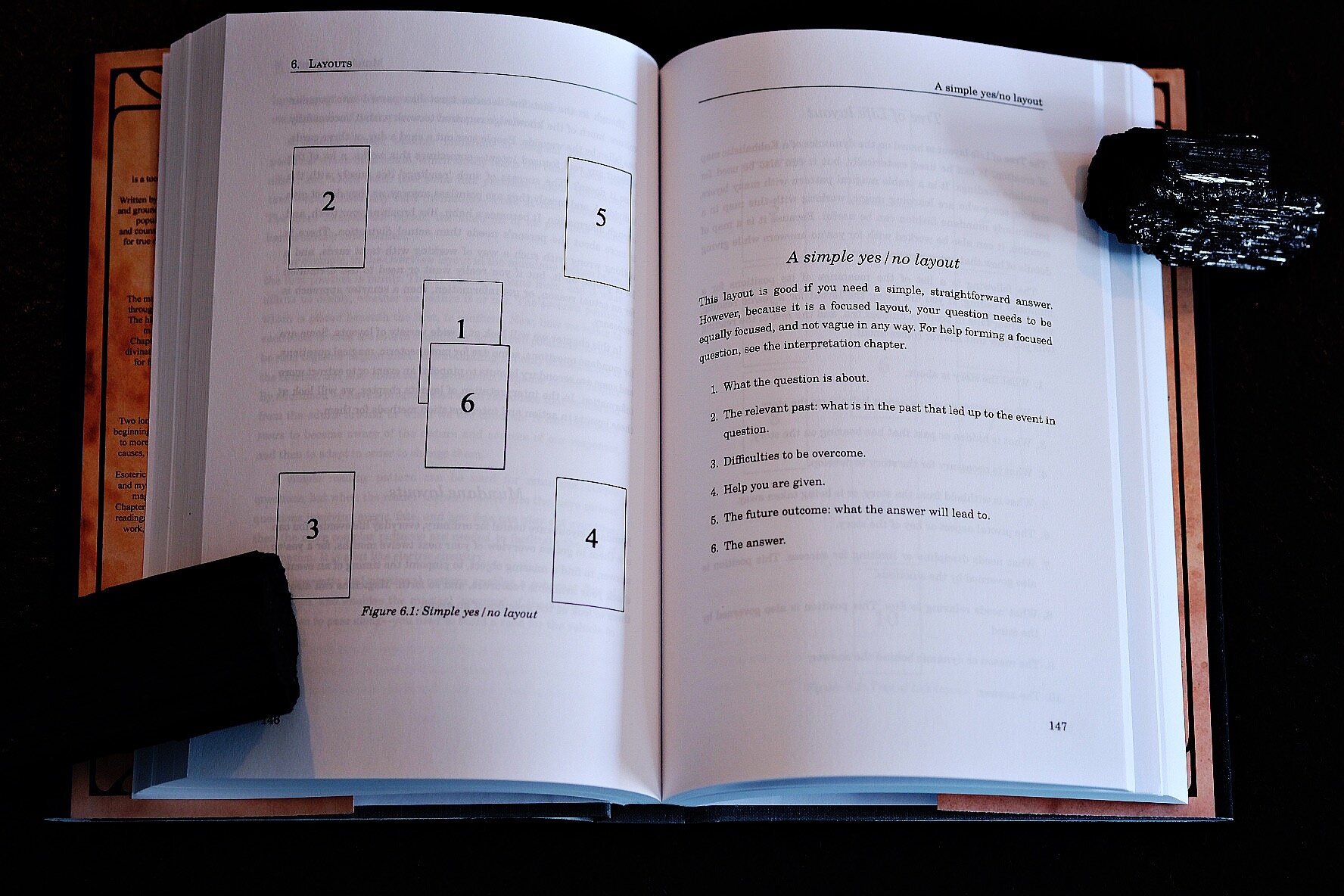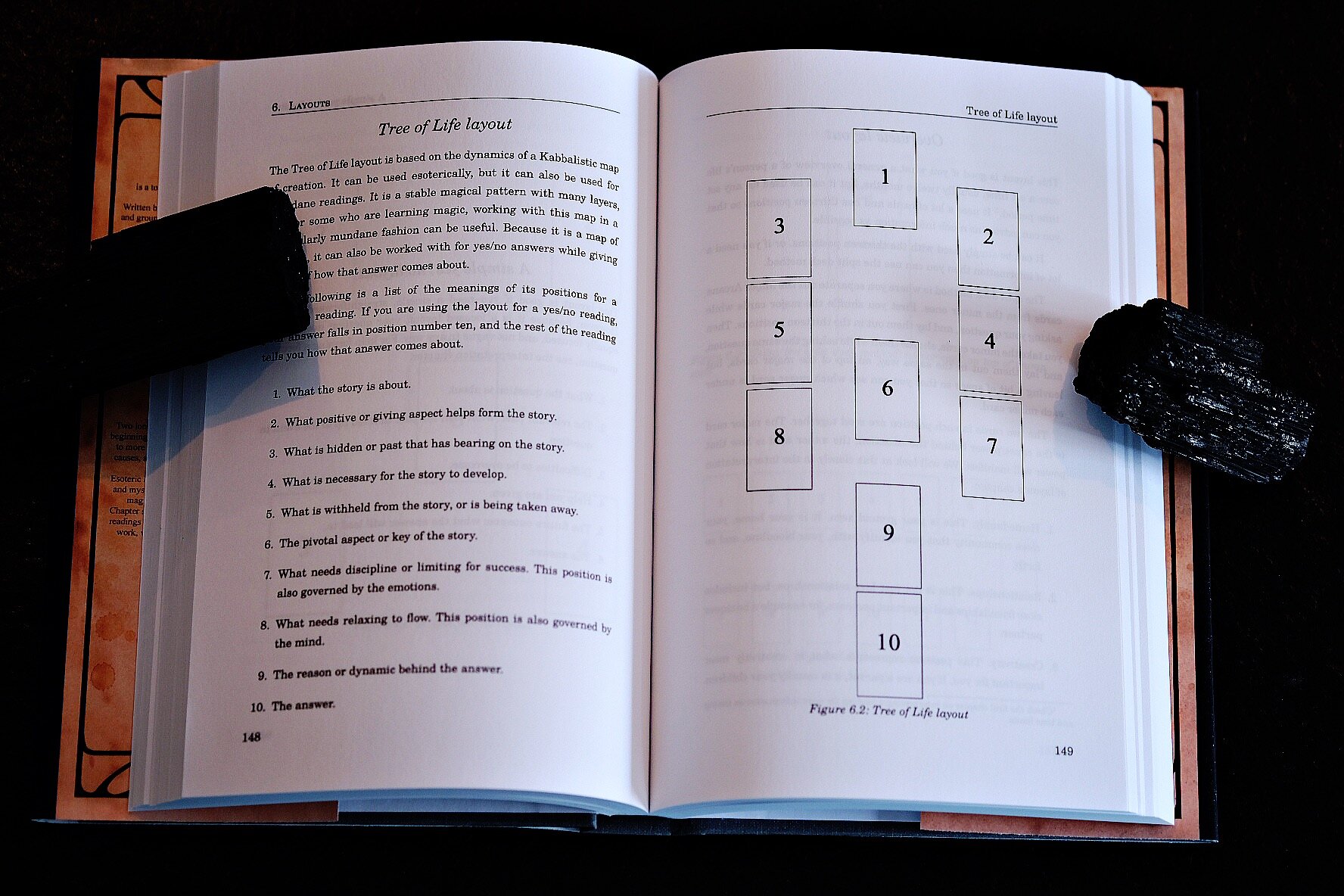‘Tarot Skills for the 21st Century’ by Josephine McCarthy
Review: Josephine McCarthy, Tarot Skills for the 21st Century: Mundane and Magical Divination. Exeter: TaDehent Books 2020, hardcover, 308 pages
by Benebell Wen
Josephine McCarthy is one of the preeminent magicians of our time. She is the founder of Quareia and author of several incredible tomes, among which I’ve read The Work of the Hierophant and The Exorcist’s Handbook. I’m also a big fan of her deck, LXXXI, which I’ve reviewed here. I am now so excited to be sharing with you my thoughts on her latest endeavor, a comprehensive book on tarot that covers both the mundane and the magical meanings of each card.
The edition I received for review is hardcover, with a beautiful velvety matte book jacket. I love that the title anchors the book in the 21st century, while the book’s aesthetics feel Old World to me. I haven’t seen this quality and caliber of production value in a tarot book for quite some time now, so there is something quite exquisite about learning tarot from McCarthy’s text.
The book begins with a strong introduction, giving you a sense of who your teacher, the author, will be, and the context from which classical tarot interpretation sprang. Having read dozens of tarot books published in the last few years, this one is refreshing in its traditionalism, formality, and also its design as a handbook to teach tarot as a venerated practice.
Quite a bit of time is devoted to explaining the meditative and intention-setting aspect of presenting a question to the cards. The concerns a beginner and an intermediate reader would have are addressed in the opening chapters.
McCarthy doesn’t read with reversals, and instead, teaches use of spreads and layouts with card positions that will indicate the negative side of the matter. When a card falls into a negative position of a spread, the positive qualities of that card are withheld, and instead, the problematic aspects are being presented. She gives the example of The Empress card. If it lands in a negative position, then you would interpret The Empress for its opposite qualities, i.e., lack of harvest, a famine, unloving, uncaring, etc. If, in a reading about a job prospect, The Empress card shows up in the negative position, then that job would be unfulfilling, and perhaps even the pay isn’t going to be good.
The bulk of the text is a reference guide to the card meanings, though how card meanings are presented is what makes this text unique and compelling. McCarthy treats the Majors and Minors differently, however. A great deal of page space is devoted to the Major Arcana entries, whereas for the Minors, only succinct phrases and keywords are provided. Rather, the Minors are taught through the elemental and numerological correspondences.
The Major Arcana
For the Majors, each entry is organized into keywords, the mundane meaning, and the esoteric meaning. To begin, one or more of the given keywords will be what’s relevant to the divinatory meaning of the card in question, so the keywords begin as your set of keys.
Let’s say as a total tarot beginner, I’m focusing my study and practice on the Majors only. I pull Key 0: The Fool card. (Fun personal story: I took out a Majors only deck to practice along and the very first card I pulled, after shuffling well, was Key 0: The Fool!)
Following the text’s instructions, one or more of the given keywords will be relevant to me, so that’s where I begin. For The Fool, we’ve got: zero, no, empty, foolish behaviour, idiot, innocent, reckless, inexperienced.
I decided to go for innocent and inexperienced.
I then go on to read both the mundane and magical meanings for the card. On the mundane level, an issue to be mindful of when The Fool card comes up to describe someone in the situation is lack of self-awareness, foolish actions, thoughtless behavior, even at worst, self-delusion. If the question asked was Yes or No in nature, The Fool card, per McCarthy’s approach, means No, or indicates that what you’re looking for isn’t there.
On to the esoteric meaning: The Fool card indicates someone ensnared in the mundane, and not engaging in the otherworldly aspect of the situation at hand. McCarthy describes the imagery of the Rider-Waite-Smith (RWS) Fool card: “In the distance are the mountains, and the Herculean path up the Mountain of Adversity to the Sun that Initiates climb on their journey of mystical and magical evolution.”
Here, I appreciate McCarthy’s insights into The Fool card that you don’t find in many tarot texts today. The Fool is not the beginning of the magical journey, says McCarthy, but rather, The Fool represents the Profane, the unclean, and that which has been rejected from entering the sacred temple. There is a sense of gatekeeping here in The Fool card, an esoteric layer of meaning you won’t find in many tarot books today. Thus, Key 0 isn’t the beginning of a journey, but rather a warning hung upon the outer entranceway: procul, o procul este profane – “begone, oh begone you who are profane.”
“The deepest Mystery of The Fool,” writes McCarthy, “is that not only is it the first major card in the sequence of powers, but it is also the last, unsaid power. If a tarot deck were to have seventy-nine cards instead of seventy-eight, the last card would also be The Fool,” though the imagery in the second incarnation of The Fool card would change, says the author. “He would be as The Hermit, alone, with only his lantern of knowledge to guide him.”
And so we begin our study of the cards with Josephine McCarthy. I cannot fully convey to you how important this book is to 2020, to where the tarot collective is today, how relieved I am that McCarthy has produced this book for us, and just how hopeful I am that her book will influence the up and coming generations of tarot readers.
I’ll go through another entry to demonstrate, though just in brief this time. I pulled Key 16: The Tower card. The author’s keywords: disaster, unexpected calamity, retribution, disgrace, collapse, clearing the ground, downfall.
“The Tower is the most malignant card in the tarot deck, and unless it appears in a withheld position, it foretells of the downfall…” begins the mundane meaning entry. “The Tower tears down what you should have dealt with yourself. […] The strength of the Tower is always balanced by necessity.” The entry proceeds to offer beautifully written wisdom. When you are going through a Tower moment in your life, pick up this book and read the entry for Key 16. “Nature and fate do not care about your emotions, they care about your actions.” McCarthy’s writing is the much-needed kick in the pants to motivate you and amplify your determination.
Many of the entries are part life-coach, but I mean that in the best possible way. The author extracts the most prescient and relevant pieces of advice the tarot cards have to offer and spells them out for you. The esoteric underpinning of The Tower card is the message of how Tower moments shift the adept. To navigate The Tower, you must evolve from asking “why did God let this happen?” to realizing what exactly you did that caused the thing to happen, and how you can prevent repetition of those mistakes in your future. “Without that shift in thinking there is no magical depth, only a magical aspirant.”
The Minor Arcana
The chapter on the Minor Arcana is only 13 pages in total, though McCarthy assures us that the meanings of the Minors are simple and to the point. The nuances are developed by each individual tarot reader. Meaning, you learn these essential meanings for the Minors, but you necessarily must fill in the stylistic aspects of each card on your own, per your world view, and even that will evolve and change as you evolve and change as a magical practitioner.
There are a few key insights about the four elements here from the author that I love. The element Air, for instance, is associated with storms, enemies, and ritual magic, to name a few of the keywords listed. Fire is righteous conflict, medicine, shamanic magic. Water is dreams and visions, spirit, intuition, and psychic ability. Earth is ancestors, entanglement, burial, and nature magic.
The pages in this book on elemental and numerological correspondences are worth the serious tarot student to learn and commit to heart. It will help you in so many ways beyond the tarot cards, and will empower you to become a versatile reader.
I appreciate how this text prepares its reader for a lifelong journey with the tarot, cautioning that learning how to interpret a tarot reading is a lot more complex than it may first appear, and will take years upon years to master.
Tarot as Vocabulary
One of the best pieces of advice this book teaches is how to approach the 78 cards as vocabulary. McCarthy gets into the details of what that means and how to do it, but just think about the many different meanings “bear” can take on, for example, and how the context you find the word “bear” in matters a lot when it comes to what that word means, whether it’s being used as a verb or noun, literally or figuratively, or even colloquially as an adjective. Interpreting a tarot card in a spread is the same.
Tarot and Art
If I were to be critical of any part of this book, it would be the section “Choosing a Deck.” First, my own biases. I’m a deck collector, deck creator, deck reviewer, and among my closest and dearest of friends are deck artists, so I’m very sure those aspects of me will cause bias in my opinion of McCarthy’s opinion. Second, I don’t actually disagree with her. I agree with everything she says, though perhaps it’s the wording that unsettles me. Now let me just get into it.
In her advice on how to choose a tarot deck to work with, she says that “cards covered in weird-looking symbols, letters, and numbers may look mysterious, but they can be really useless for divination.” She is a strong proponent of the RWS. She goes on to say, “If you feel drawn to nontraditional decks, do not be lured by the artwork. Some decks are beautiful but magically illiterate and therefore useless.” She also says of some of the contemporary decks, “Some are wrapped up in psychology to the point that they, too, are useless.”
Like I said, I don’t actually disagree with her. It’s a refreshing contrast to the dominating sentiment you hear today – use any deck you like! It doesn’t matter, as long as you like it! I’ve always wondered whether that’s sound advice to be giving to a total tarot beginner. So yes, McCarthy’s strong point of view is refreshing.
Since Tarot Skills is keyed to the RWS, I also agree that if you’re learning tarot with this book, then you would want do so with the RWS. If you pick up a nontraditional deck and try to learn how to operate that deck with McCarthy’s book, you’re going to hit a wall. Whereas this book is an excellent primer for the RWS. Tarot Skills is going to give you an impressively well-rounded education in both the magical and mundane operations of the tarot, but throughout the text, it makes very specific references to the Rider-Waite-Smith system.
I think what unsettles me is how dismissive the wording feels toward contemporary deck artists and creators, which of course, is being triggered by my own biases. Oh, by the way, and this may very well just be my own subjective impression, but I could not help but smile throughout my reading of McCarthy’s book because of how much she sounds like Waite himself. Like at points I seriously questioned whether she was channeling Waite and he was writing this sequel book to his deck through her, but anyway that’s neither here nor there, and I’m not bringing that up as a serious point of review, just as a fun, tongue-in-cheek giggle.
Layouts & Interpretation
The most valuable section of this book is on interpretation, beginning with the importance of how you construct a question, creating a concrete framework of time and limitations for your line questioning, and the big-picture consideration of fate patterns and cycles, even when reading about something specific and micro-focused.
While McCarthy can be dismissive of tarot decks, I really appreciate how seriously she conveys the point of esoteric voices and who is speaking to you through the tarot. I don’t see this addressed enough in modern texts and if anything, tarot writers today tend to be dismissive of this one point I find quite serious: “Sometimes beings will manipulate not only the reading itself – what cards come out – but also how you interpret those cards: literally, they can mess with your head.” To safeguard against that, she instructs on the Inner Library, and from there, all of what she writes is very much aligned with how I approach esoteric tarot.
The rest of the book discusses tarot layouts, or spreads. Fifty percent of successful, accurate tarot reading is the layout, espouses McCarthy, and her treatment of layouts in Tarot Skills reflects that. Not only is a powerfully effective, versatile portfolio of layouts provided, along with how to operate them successfully, she gives you important insights on how to craft your own and what to bear in mind to make sure you’re crafting effective layouts.
Conclusion
Tarot Skills for the 21st Century: Mundane and Magical Divination by Josephine McCarthy is, at present, peerless. It stands out from the pack and is a necessary addition to the contemporary tarot library.
When one of the most incredible and prolific occultists of our time, one with over 45 years of tarot reading experience, publishes a book on the tarot, you sit up and you pay attention. The back cover features a quote from McCarthy: “At this point in my life and work, I thought it was about time that I wrote a guide to tarot, to cast a light on a path that can be far more profound that it initially appears.” And to that point, Tarot Skills for the 21st Century delivers.
